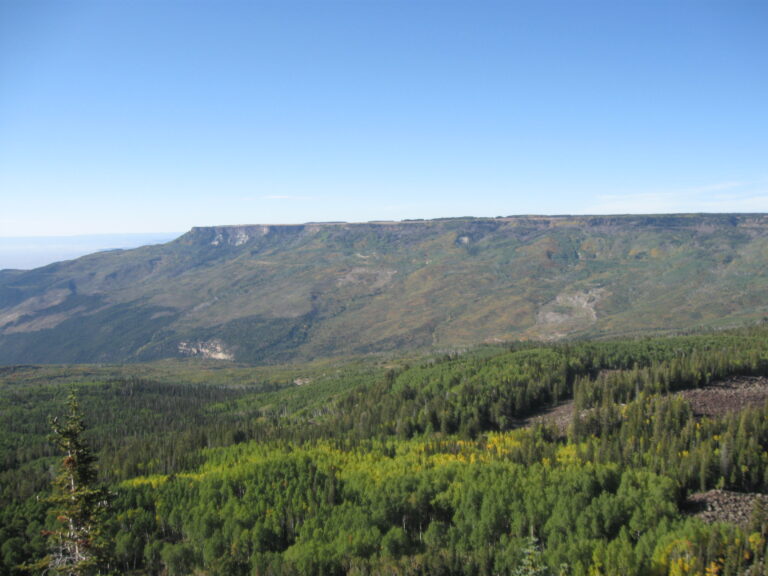 I’ve just walked through more than 50 million years of time in one afternoon. I’m not sure if it’s the remnants of a little boy’s fascination with dinosaurs or my present fascination with natural history, but the walk along Dinosaur Ridge was entirely captivating.
I’ve just walked through more than 50 million years of time in one afternoon. I’m not sure if it’s the remnants of a little boy’s fascination with dinosaurs or my present fascination with natural history, but the walk along Dinosaur Ridge was entirely captivating.
The rock formations next to Alameda Parkway north of Morrison show traces of life that date between 100 million and 150 million years old: Impressions of an ancient mangrove swamp, the ripples left by the movement of water and, most impressively, dinosaur tracks.

The tracks of Iguanadons (large three-toed herbivores) and smaller ostrich-sized carnivores crisscross the side of the ridge like muddy footprints on a prehistoric linoleum floor. Many of the footprints could easily contain seven or eight of my own.
Roger Bennett, manager of the Dinosaur Ridge Visitors’ Center marvels that the footprints are there at all. “Everything had to be just right in a short period of time to preserve everything,” he said. “That’s why there are so few,” though the more than 335 tracks hardly looked like few to me.
In 1877 Arthur Lakes first excavated bones from the rock formations near Dinosaur Ridge; an excavation site on the west side of Dinosaur Ridge still holds fossilized remains of the ancient animals. The fossils are deep red or brown, easily visible against the sand-colored stone of the ridge, and are smooth to touch. I put my hand on a large bone from the limb of a dinosaur, amazed that I was touching the remnants of life some 140 million years old.
The Dinosaur Ridge Visitors’ Center, on Alameda Parkway just off Colorado 470, offers informational brochures, maps, bottled water, casts of dinosaur footprints and plastic dinosaur toys. The center is operated by the Friends of Dinosaur Ridge, the non-profit group dedicated to preserving and protecting the site.
Many of the more than 70,000 people who visit Dinosaur Ridge each year are children. “Kids love it here because they love dinosaurs,” Bennett said. Children can practice excavating in a dig pit off the deck behind the Visitors’ Center with a reproduction of a dinosaur skeleton buried in sand.
But Dinosaur Ridge is more than an attraction for the young ones. The site hosts high school groups and college students from all over America who come frequently to see the traces of prehistoric life. “We provide things not only for kids, but for parents and grandparents as well,” said Bennett.
The road across Dinosaur Ridge is 1½ miles long and takes up to two hours to walk in both directions (it’s literally uphill both ways), but all of the sites are just off the road and easily reachable by car. A trail for running or hiking runs along the crest of the ridge, though no fossils or footprints can be seen.

The Morrison Natural History Museum, a short drive from Dinosaur Ridge, is also worth a visit, offering hands-on tours with displays of live reptiles and fossils excavated from Arthur Lakes’ original sites in the late 1800s.
In Golden, Triceratops Trail, near U.S. 6 and 19th Street, is a bit harder to find but contains fossils of Triceratops footprints and impressions of drops from rain that fell more than 60 million years ago.
If You Go
To contact Friends of Dinosaur Ridge for information about educational programs and services, visit www.dinoridge.org or call 303-697-3466. The Visitors’ Center is at 16831 W. Alameda Pkwy., Morrison.
Josh Bishop is a graduating senior in Metropolitan State College of Denver’s journalism program. He is a native of Michigan.
From the Editors: We spent a heap of time making sure this story was accurate when it was published, but of course, things can change. Please confirm the details before setting out in our great Centennial State.



